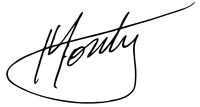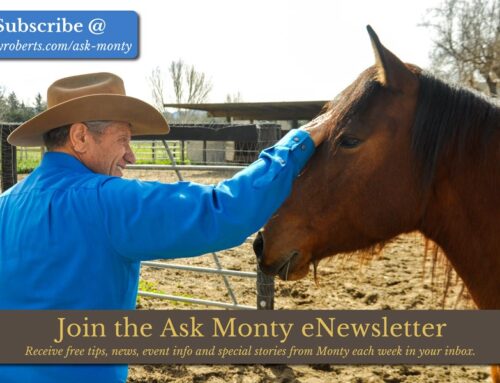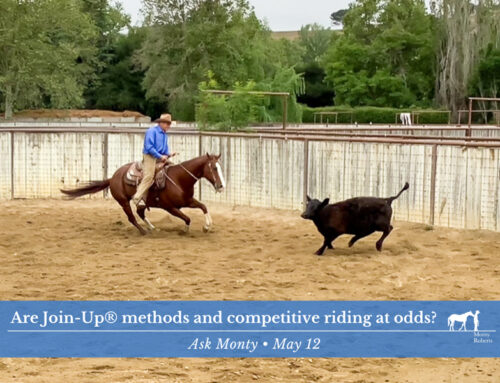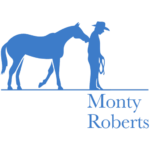June 10, 2020 – Ask Monty Newsletter
Question: How do you build confidence in a horse?
I would like to ask some advice from you about a 7-year-old mare. She is an Oldenburger sport horse. She was been started in a traditional way, and the owner told me she was totally fine with the first rider. She was been started by a young girl who is the daughter of the owner.
After a couple of rides, she just stopped in the corner of the riding arena and started to kick towards the center, but slowly she became normal again. Her jumping carrier started fine, she jumped every fence without any problems. Then at the first competition she refused to jump any fence and started to spin with the rider until the rider fell off. Then the owner asked a professional jumper to ride her and she was jumping at the competitions as well. This has been the situation for more than four years.
After that, the owner decided that he wants his daughter to ride this horse again, but the old problem came back. She is 100% fine during the training, she is 100% fine when there are more horses in the arena, and she is also 100% fine at the warming up area. But she is only jumps one or two obstacles during the actual competition before she starts to spin around and refuses to go forward again, she rears up and bucks the rider off.
She is very easy to handle, transport etc. The owner said that this problem only starts at competitions and only when a female rider is on her. When a male rider is going in the arena with her, she is quite nervous at the first jump, but when the rider is confident and rides firmly enough she jumps without any problems. She has been competing at 120 to 130 cm jump height.
My idea is, that this attitude comes from a lack of confidence and I think she learned this behavior. Do you think it would be a good idea to try to go in the arena at a competition, but much lower height, 80 to 90 cm, jump one or two fences and just finish it, before she decides to refuse to go forward again?
She was checked by the vet, teeth and everything, but because she is fine during the training I do not think that this is a physical problem. Please let me know what do you think.
Monty’s Answer:
After the hundreds of questions that have come through for my online Q&A, one would have to believe that there is simply no longer a new one. Obviously that is not true. A question has come through from Hungary. It was couched so as to not reveal the names of the people or even the horse. I will attempt to answer this because I suppose it’s time to face some facts about the mind of the horse, how it works and how we attempt to learn to relate to their behavior. Let me use the words of a friend of the owner who was translating from the Hungarian language.
“We have an Oldenberger mare that has been with us for at least four years. My daughter did the first riding of this mare and she was started with very little problem. After a few months of riding, we began to negotiate cavalettis and small fences. There was no problem and the mare appeared to have the ability to compete right through the world of showjumping. After a limited number of rides, our mare would simply stop, facing the fence and kick out with both hind feet toward the center of the arena. My daughter worked her through this and the mare seemed to be progressing quite well. We entered our mare in a few small show with low level competition and small fences. She seemed to progress and we believed we had a good chance to have a showjumping winner.
As we progressed through the early stages of our showjumping mare’s career, the problem returned but in a slightly different way. We could handle her with no problem. She loaded on the vehicle and with no behavioral negativity we went off to several of these small competitions. Gradually she began to return to the early negative behavior. At first she was fine in the warm up ring, but began to stop at the warm up fences, reverse her direction and kick out behind. My daughter is a good rider and there was no problem with her staying on the mare, but it took some time to get her to negotiate the fences in the warm up ring. Just as I was feeling our mare was improving, we then discovered that entering the competition ring she would return to the same negative behavior.
We sent the mare to a man who has a good reputation with showjumping horses. We believe he has not fully defined how he handled our mare, but he took her to competitions and gradually had her jumping 120 to 130 cm., even when facing these fences in the show ring itself. When our daughter tried to duplicate the circumstances outlined, the mare would go to the warm up ring beautifully. She would pop over a few warm up fences with what seemed to be no problem at all. When asked to enter the show ring and was actually in competition, she immediately reverted to the early negative behavior. Our mare would not jump one fence when asked to do so when it was actually in a competition in the main arena of several different show grounds we traveled to.
We simply don’t know what to do at this point in time because we have beautiful mare in the prime of life and she has decided that while she will jump with a man on her back, she will not jump for any female rider, even one of the highest professional levels. A professional female rider can in fact get her to jump some fences in the warm up ring, but when our mare is asked to go into the actual competition ring, she changes immediately. When competition and a judge is involved even the highest level female rider cannot negotiate one fence. We have tried everything. We have traveled to different locations and even presented to have a competition with friends as officials. As soon as she is asked to g into the main arena, jumping becomes impossible.”
Okay, it’s my turn to answer this incredible question. First I have to through away 80 years of studying the minds of a horse. If I am to take this question and accept it as written, then I must decide that against all studies horses know when they are in competition and when they are not. I would have to assume that a horse can identify an official and separate that official from the rest of the human race. I would have to go further and conclude that a horse can look at a given riding area and decide whether it is a warm up ring or the main competition area. This question would also ask me to agree that horses can differentiate between the difference between men and women and decide who they want on their back before they agree to behave or misbehave.
Of course, none of these things are true. Horses cannot read the newspaper about an upcoming horse show. Horses cannot fill out an entry form nor can they decide what city they are going to and that it is for competition. When the horse is on the new ground, they cannot decide whether they are being scored by judge or whether they are warming up in a insignificant area or an area very important. Horses cannot relate to a structure of purse money and they have no idea what a trophy is or even a small ribbon (rosette). Any horse including the one in this question, waits until the rider gives them these answers. They simply read the messages sent from the core of the rider through the human body. We must realize that horses simply never forget.
The circumstances described in the life of this horse paint an unmistakeable picture of a young lady who clearly gave the horse a feeling of uncertainty, way back in those early days. The mare waited until the next thing happened and then as the requests moved upward she tested the rider’s core and decided when to take charge. This mare believed that taking charge was the answer to finding a safe place. Whether it was small jumps or large, a little arena or a large one, the mare was still reading the core of the rider. No horse can differentiate competition from non-competition. It’s the human that sends the message through that there is an elevated sensitivity within the care of that rider. The change was clear when moving from the warm up ring to the main arena.
When this mare was sent off to a male trainer, she became a winning jumper, not because it was a male rider, but because this particular male rider had confidence in his abilities and clearly showed no insecurities down deep in his core. The mare found comfort in that and went to work.This is not rocket science. It is perfectly clear what has happened here. If I had the opportunity I believe I could discover insecurities in the core of the female riders chosen to attempt jumping competition with this mare. I could fill this page with the names of female riders who can ride this sort of horse as well and some better than any male on this earth. Security and full understanding of the horse’s needs is what is critical here. It should not be a story of this mare reading the minds of her riders.
It is not the mare that needed to be trained in some unique way to accept all riders on her back. She has been habituated to reading her first rider who gave insecurities through to her. That’s the way the mind of equus works. Each of our horses was born with primary goal of life which is to be in a safe place. Horses have only two goals in life. One is to reproduce and the other is to survive. Once one begins to believe that their horse can differentiate between a judge and an attendant in a warm up ring, that person is traveling down the wrong path. Typically in all of these cases it is the people in the life of the horse that need to be educated and it is seldom that some other way to educate the horse is the answer to the question.
Sincerely,

Read the full newsletter: How do you build confidence in a horse?




